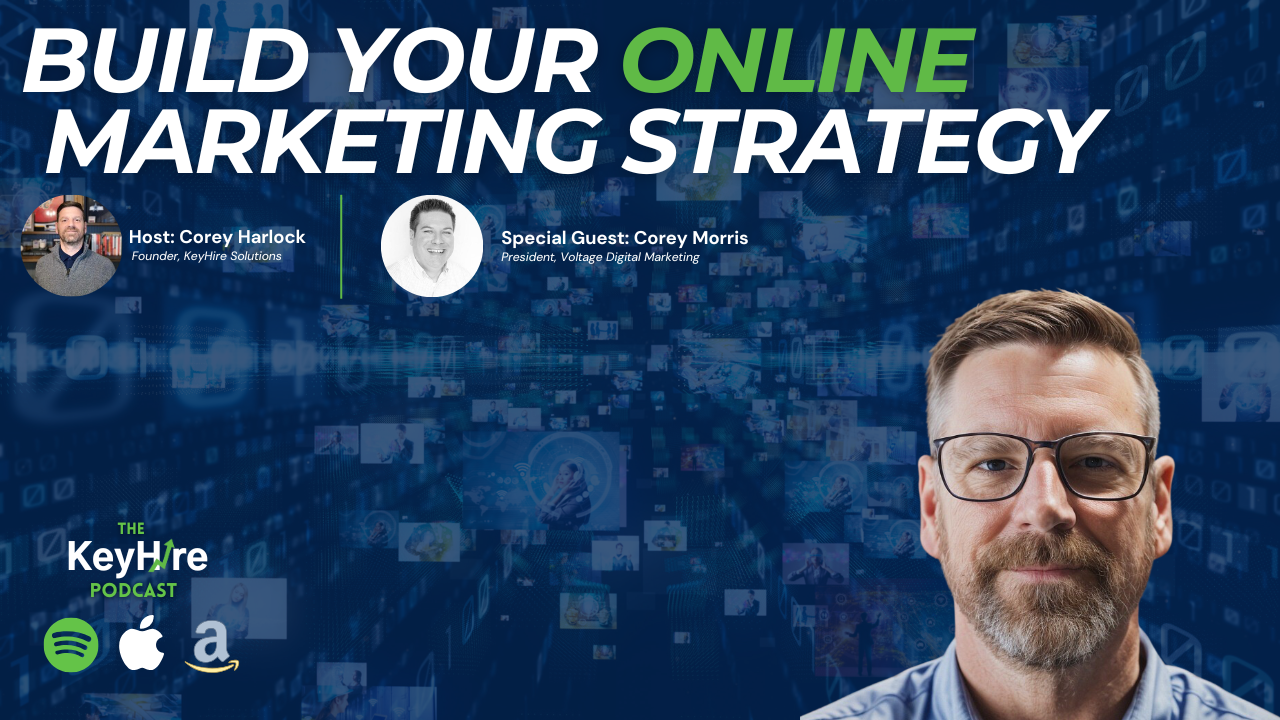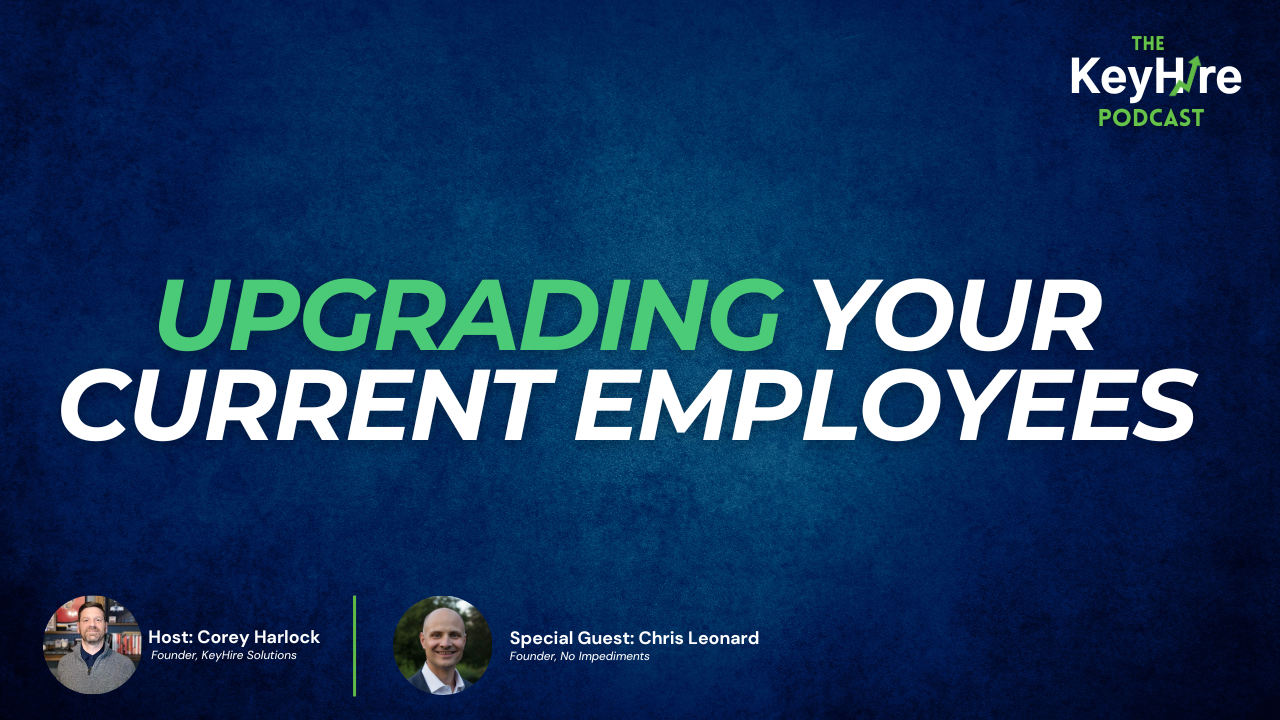Finding the Time to Hire
Finding the Time to Hire Can Be Harder Than You Think.
One of the biggest issues we hear from clients is “I don’t have time. I need people, but I don’t have time.”
There’s this vicious cycle that starts when you don’t have the people.
That means you do more, take on more responsibility and have less time to find the right people because you don’t have the people. When we talk to our business owners experiencing this issue, it is usually pretty easy to diagnose. We start looking at their organizational charts and filling in spaces and we see their names and their key people’s names appearing over and over again in key roles.
So, we have few people doing a lot of roles. We’re breaking our people’s necks, meaning we have them working in a direction, and then we ask them to stop what they’re doing, do a 180 and work in another direction and do something completely unrelated.
We ask them to do accounting and then we ask them to do marketing. That’s a really hard space to be in because your productivity goes way down. It takes a long time to get back in the groove. Plus, it’s just hard. It’s exhausting. And then we’re burning our people out.
They’re having to work extra hours because these transitions are so hard for them. So the most important thing we can do is find a way to make time to acquire the people we need to realign our key people to have them do what they’re good at and what they love to do. This will keep that fire lit, keep them productive, keep them happy, and not have them leave.
Keep this in mind. It doesn’t matter how happy your people are – they’re getting calls. There is a people shortage out there. Your people are getting called and they’re not getting a call every six months. They’re getting called monthly or weekly. If they’re in a situation where we’re stressing them to the limit and they are loyal to you and they’re dedicated, there comes a breaking point where one day they’re gonna say “heck, I’ll listen to what you have.”
Treat your people well and get staffed up. So how do we do that? We don’t have the time. So the first thing is the hiring process you’re using.
Most people think the hiring process is, post a job, get a resume, do an interview, make a hire. Voila, their life is improved. People come in and everything is great. It’s the home run mentality. If you make one hire, everything is solved. The truth is that is false.
We don’t try to hit a home run. We try to hit four singles. If we go back to that original home run philosophy, people post the job descriptions and there’s one of two things happening. People are either overwhelmed with applicants or people are getting no applicants.
Let’s look at the overwhelm scenario.
The great thing about posting a job online is anyone can apply to it. The bad thing about posting a job online is anyone can apply to it. When you post on a job online people say, “oh, we’re getting a lot of great candidates.” Let’s really dive into that.
If you get a hundred people that apply, there’s a safe chance that more than 50% of those people don’t even live in the right area code or zip code. They don’t live in your area. They might not even live in your country. So we eliminate a lot of people, but we have to screen those resumes to find this out.
You spend 90% of your time eliminating candidates from the process. That’s wasted time. If your accounting process in your business was 90% wasted time, what would you do with that process?
You would, at the bare minimum, have a look at it and try to improve it but you’d probably throw it out and just create a new process.
Here’s the secret – every part of your process has to mean something and you should be putting the work in upfront. Identify exactly who you need, what size company they need to come from, how many years of experience they need to have where they need to be. What specific exact experience do you need to have? What is the culture they need to come from? What are the core values they need to exemplify? We build that in what we call our avatar, and that’s where we spend most of our time, is getting ready to go to market.
Once we have that, we use that to build our acquisition message for the candidate. Once we build in our messaging, we then go into the market and find the people that meet the criteria we’re looking for and we engage with them.
We send targeted messages, we start a conversation. Now they’ll go through very detailed process, 15 minute pre-screen, 45 minute – 60 minute culture-focused group video interview, then an on site visit. But every step of the process is a go. No go. We don’t prescribe to, we’ll see it, we’ll know it when we see it.
Every step of your process has to be detailed and “go or no go.” So by the time you complete a video interview, you should know if it’s the person for you or not.
So when you bring them on site, we shift from interview to sales. If there’s a couple questions we want to get wrapped up, we can do that at the beginning of the onsite interview, but then the onsite interview becomes a sales pitch for your company.
If they’re a go, we get an offer out within 24 hours. The days of we’ll throw it a low ball offer and then we’ll negotiate with them are gone.
Those are gone because if you put a subpar offer, another company is putting out their best offer. And if you’re not competitive, they’re just gonna say “Thanks, but no thanks. I got a better offer on the other side. They weren’t playing around, they just gave me exactly what I wanted.”
The idea is to create a process where our input is valuable and we front load our work, but once we get into the process we only need to interview on average 1.8 candidates per job offer. We’re not interviewing 5, 6, 8 people to hire one. We’re interviewing one or two. Because once we get them to the offer stage, we’re sure they’re the people we want and they’re sure they want to come work for us, it’s important to have a very defined process of exactly what you’re gonna do, who’s gonna be involved, what the steps are, so you can move efficiently through that process.
The entire process should take you no longer than 10 business days from first contact.
We hope that helps you find time to hire – we promise it’s worth it. So rethink the process, and be more effective and efficient, but thoughtful about every step. Don’t waste your time, right?
We hope you enjoyed the latest entry in the KeyHire Small Business Blog – if you have questions please contact us at www.keyhire.solutions, or schedule a free consultation with Corey at www.keyhire.solutions/consultation.











